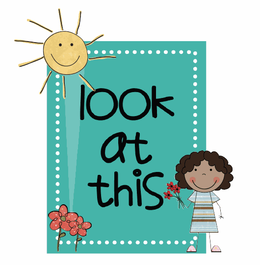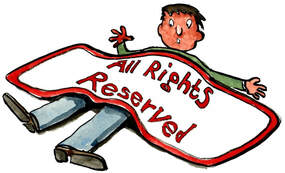|
Continuing a re-run of our series of marketing blogs, just in case you missed them first time around.  I’m going to be honest with you up front. To market your book properly you really need to do a business management course with a strong marketing focus, then work in a marketing department or consultancy for several years to gain experience. But you haven’t got time for that, so you read blogs about marketing instead. Fortunately, one of our team (me) has a Masters in Business Administration and knows a bit about marketing, so we can post this blog and not worry about being accused of not knowing what we’re talking about. But it is a complex subject and in a blog all we can really do is scratch the surface and provide you with a few pointers to get you heading in the right direction.  Our starting point is the “6Ps”, aka “The Marketing Mix”. These are the six areas on which a marketing strategy is based. Get them right and you have a fighting chance of selling your product – any product. Get them wrong and you are going to struggle to sell anything. Pretty much anything you have ever bought that isn’t an essential to your survival, you have bought as a consequence of responding to the marketing mix. Even the brand you have selected in preference to another brand is as a result of successful marketing. You are even reading this blog because of marketing. "You are even reading this blog because of marketing." Marketing is so ubiquitous that we hardly even notice it. Note that I haven’t used the word “advertising” so far. That is because advertising is just one small part of the marketing mix – though it is the bit that probably costs the most. But what are the 6 Ps? They are:
 But before that we’re going to talk about book covers. Why? Because they are actually part of your marketing mix. They are a “promotion” tool. But they are so important that they need a whole blog of their own. They say “Never judge a book by its cover” (African Journal of American Speech, 1944 - the original version actually said “spine”, which is even more pertinent). But people judge books by their covers all the time. And they will judge your book by its cover too. "And they will judge your book by its cover too." Imagine you are in your favourite bookshop, looking for your next read. You browse along the line of shelves and all you can see is the books' spines. On the spine you will see two things: the author’s name and the book’s title. The rest of the spine is just coloured paper and maybe a few stray lines from the book’s cover that the designer wrapped around to make it look more interesting.  You will be drawn to the book either by the author’s name – it is familiar to you - or by the book’s title - it is intriguing and you want to know more. So, you pull the book off the shelf and you read the blurb, which is either on the rear cover or on an inside page where it’s easy to find. By the end of reading that you are halfway to buying the book. You may, by now, have noticed the front cover, but you may not have. But on a website, you aren’t just presented with the things you are in a bookshop. On a website you can see the entire front cover of the book. If it grabs your attention it may draw you in before you even know the author’s name or you read the book’s title. So, the cover of the book is now a vital ingredient of your marketing strategy. Whatever we are here at Selfihsgenie, we’re not experts on book cover design, but we know that if you put the right cover on the right book, it will sell. It needs to tell you something either about the plot or about the main character(s). Most of all it needs to tell you something that will make you want to read the blurb.  Look at the cover for Stalker, which is one of the books we publish. The cover is dominated by a shadowy, menacing figure. Straight away you know that this is a book about menace and threat, it is trying to unnerve you and make the hairs on your neck stand on end. It is probably more unnerving for a woman, which is unsurprising as it was written by a woman, but some men may also feel threatened by it. If you like books that do that, you may want to know more, in which case you will probably read the blurb and, if the website offers the facility, you may “look inside” and start reading the story. You are well on your way to buying that book. In fact, statistically, you are more likely to buy it than to not buy it. BTW, you can click on the image to find out more. There are a few ways to go about getting the right cover for your book. We’ll start with the cheapest.  If you are an artist or designer, you can do it for yourself. One of our author’s was lucky; his sister* is an artist and because the book is a biography of their father, she was willing to design the cover for free. And it is a particularly good example of what we’re talking about. It’s the image shown alongside. I don’t know about you, but when I saw that face I wanted to know more about the man behind it. The eyes, in particular, have a quality that invites the question “What sort of man is he?” and to find out the answer, you have to read the book. Which is why we published the book. I’m not going to pretend it’s one of our best sellers, it’s in a very niche genre, but it has sold enough copies to justify its presence in our catalogue. Again, you can click on the image to find out more  The next cheapest option is to find a designer online who will design your book cover. There are plenty plying for hire on Fiverr.com and some of them are very good. Prices vary, you can get a simple design for about $20, but anything that requires more work is going to cost more. It is necessary to be very clear about what you want from your designer. They will do what they’re asked to do and they won’t read your book first to find out what it is about. This means that you need some sort of idea of what you want your cover to look like before you brief them. "The style must suit the genre of book. " The style must suit the genre of book. Moody sunlight over wildflower meadows, women in big bonnets and hunky men with their shirts open to the waist are fine for romances, but they aren’t going to sell you many sci-fi books or spy thrillers. So, make sure you understand what the norm is for your genre. It’s fine to be original and mould breaking, but only within the “rules” for your genre.  My recommended start point would be to go onto Amazon (or any other bookselling website) and browse through the books that are on offer, within your genre. Try to ignore the titles and author’s names. Just focus on the cover images. Which ones stand out for you and which ones don’t? The answer to that will inform what you ask your designer to do. If necessary, copy an image and send it to the designer and say “something like that!” Many designers work with Photoshop or similar software to merge and overlay images. That’s fine if they produce the result you want. But remember, you have to own the right to use the image(s).  If you didn’t take the photo(s) yourself, you don’t own the copyright and you can end up in trouble if you use the image without the copyright owner’s permission. And it doesn’t have to have the © symbol displayed for you to be liable. There are hundreds of thousands of images available on websites such as Depositphotos and Shutterstock (and similar sites) and their general licences allow you to use them for book covers (sometimes up to a maximum number of copies sold). Bite the bullet and buy from them. Yes, you can go onto a search site such as Bing Images and select the filter that says “Free to share and use commercially” – but that doesn’t mean they are. I have seen images that are the copyright of companies like Getty Images that are displayed under that filter and Getty Images are very litigious if you use one of their images without purchasing a license. Never assume – always check. As an aside, the same applies to ANY image you use in a book. If you didn’t take it or make it, you can’t use it without permission and you may (more than likely will) be sued for breach of copyright. Yes, we know that lots of people do it, but that doesn’t mean they won’t end up in court one day. Just remember the story of Wikipedia and the monkey that took a selfie.  Many publishers offer a design service for book covers. Some ask for payment up front, but others don’t, and some state that if the author takes back the publishing rights for the book then they have to purchase the right to use the cover image. So do make sure you know who owns the copyright for the cover – it may not be you. You may have to have a new cover designed if you want to self-publish the book or sign with another publisher. FYI, we make it clear in our contract that if we design a cover, or pay for a cover to be designed, then we own the copyright for it and it has to be purchased if the author wants to use it elsewhere. To be honest, we’d rather the author came up with their own cover design, but we know that isn’t going to happen very often. Not every author has a sister who is a talented artist. For some more tips on book cover design, try this blog. So, you have an edited and proofed book, you have a cover and it is sitting on a retail platform just waiting to be discovered by eager readers. What happens next? Find out in next week’s blog. If you have enjoyed this blog and found it informative and don't want to miss the next edition, you can sign up to our newsletter by clicking the button below. We'll even send you a free ebook for doing it. * To find out more about the artist who designed the cover for "A Commando's Story", Di Cubitt, you can visit her website.
0 Comments
Leave a Reply. |
AuthorThis blog is compiled and curated by the Selfishgenie publishing team. Archives
June 2025
|
 RSS Feed
RSS Feed